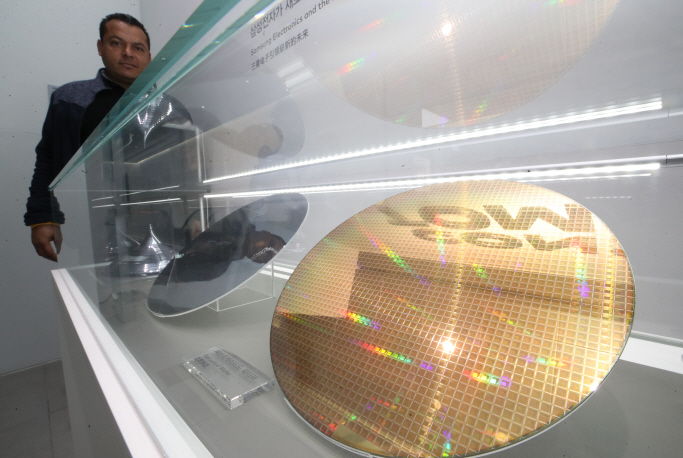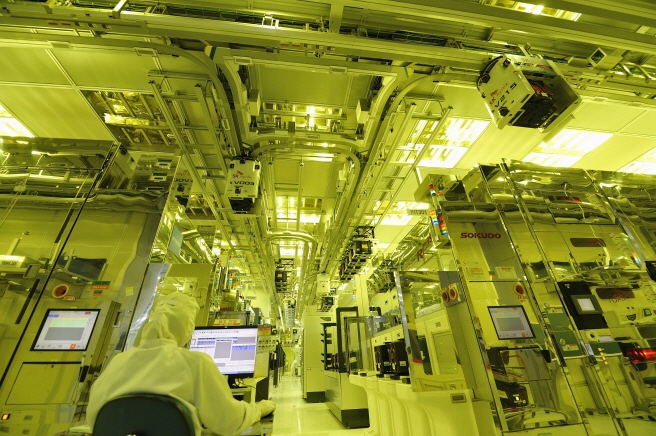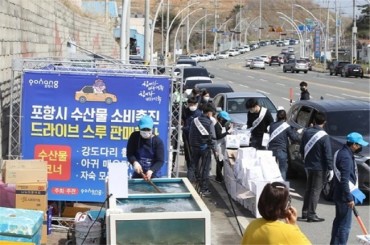SEJONG, Apr. 30 (Korea Bizwire) — South Korea will make a concerted effort to build up its non-memory chip industry in line with its goal of becoming a global semiconductor powerhouse by 2030, the government said Tuesday.
Under the system semiconductor vision strategy, Asia’s fourth-largest economy has set its sights on establishing itself as the world’s top player in the foundry business by the target year, the Ministry of Trade, Industry and Energy said.
The ministry said the country will also expand its market share in the fabless segment to 10 percent from 1.6 percent posted last year, as it strives to take full advantage of sweeping economic changes under the fourth industrial revolution.
Fabless firms are chip companies that design but do not have manufacturing facilities of their own, with foundry businesses making products for these firms. Both kinds of businesses are considered to be crucial for the non-memory chip industry as a whole, with emphasis placed on customized manufacturing compared with mass production for memory chips.
Small scale manufacturing of customized products is one of the key aspects of the fourth industrial revolution.
Through 2030, the government said it will support some 170,000 experts in the non-memory chip field and allow them to join forces with local universities. Compared with memory chips, such as dynamic random-access memory (DRAM), non-memory chips cover application processors, automotive chips and image sensors.
Around 1 trillion won (US$862 million) will be spent on research and development (R&D) projects over the next 10 years, with the industry ministry and the Ministry of Science and ICT playing a leading role in the funding.
The government’s latest announcement comes after South Korea’s top chipmaker Samsung Electronics Co. said earlier this month it will invest 133 trillion won by 2030 to expand its non-memory and foundry businesses.
“Along with the investment from the private segment, we need to support infrastructures that are crucial for the overall industrial ecosystem,” Industry Minister Sung Yun-mo said, claiming the new policies will help South Korea better adapt to changes in the global chip market.

A silicon wafer is on display at Samsung Electronics Co.’s Seoul building in this photo taken April 1, 2019. (Yonhap)
Going into detail, South Korea will focus its efforts on the top-five major areas in the fabless segment, namely automobiles, biotechnology, energy, Internet of Things (IoT) appliances and machinery industries.
Considering the high barriers in the fabless segment in general, the government will launch public projects in cooperation with private companies in various fields ranging from transportation to defense. This joint endeavor could make it easier for fabless firms here to acquire real business experience, with such track records expected to come in handy when securing overseas projects.
Related to joint endeavors, Seoul will launch a so-called Alliance 2.0 platform that will better connect fabless firms with both private and public sectors. Examples of the potential tie-ups may include intelligent closed-circuit television and infrastructure for self-driving automobiles, the ministry said.
As for the foundry firms, the ministry said it will have industry leaders focus on the high-end market and encourage small and medium-sized players to concentrate on midrange business opportunities. The government plans to financially support smaller firms to improve their facilities and enhance productivity.
A 100 billion-won fund that can beef up small fabless firms has been planned.
The government, in line with the latest efforts, will revise security policies to more effectively protect local technologies and know-how from being exploited by overseas rivals.
Despite its high standing in the memory chip business, South Korea has been lagging behind global rivals in the non-memory sector. The country accounted for 3.1 percent of the world’s market for non-memory chips in 2018, only managing to pull off a 0.1 percentage-point gain from the previous year.
The figure compares with a market share of around 73 percent posted by Samsung Electronics and SK hynix Inc. in the global market for DRAM last year, according to DRAMeXchange. The two companies accounted for around half of the global market for NAND flash memory.
South Korea’s outbound shipments of semiconductors, meanwhile, came to around $127 billion in 2018, making it the single largest export item, with memory chips accounting for $94 billion. Semiconductors accounted for 20 percent of the country’s annual exports, which reached a record $605 billion for the one-year period.
(Yonhap)







